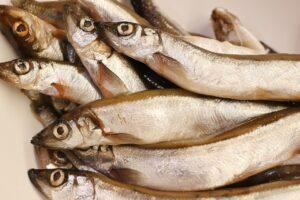This year we can still get Christmas fish at last year’s price
Due to the more unfavorable weather conditions than last year, fish farmers are closing a weak-average year overall this year, but despite this, they are not planning a price increase for the Christmas season compared to the previous year. So if the retail chains also apply last year’s margins, families will be able to get their festive fish at last year’s price levels this year as well. Fish will be present on the Christmas table of 80 percent of the population this year as well, thanks to which 35-40 percent of the annual domestic fish consumption is concentrated at Christmas.

Dr. István Németh, president of the Hungarian Aquaculture and Fisheries Professional Association (Mahal), told Agroinform.hu that the price of live carp will be between 1,800-2,200 forints per kilogram, while sliced carp will cost between 3,500-4,000 forints. Traders will ask for around 4,000 forints for a fillet of African catfish, while the price of a kilo of filleted gray catfish may range between 8,000-9,000 forints this season.
According to the expert, despite the dry summer and slower-than-average body weight gain due to the heat, the supply of carp, catfish and bream, which account for about 80 percent of domestic fish production, will more than cover domestic demand during the Christmas season, and in addition to the domestic market, it will also be exported. The fishing will be continuous in the coming weeks, so it is not worth waiting until the last days, as Christmas fish can be purchased from the first days of December – a few weeks of freezing will not cause a deterioration in the quality of the fish.
Although it is increasing slowly, per capita fish consumption is still very low in international comparison, at 6.5-7 kilograms, compared to the European Union’s annual average of 22 kilograms. The situation for producers is also made more difficult by the fact that more than a third of the subdued domestic consumption is concentrated at the very end of the year. However, the Mahal president is optimistic about long-term trends, as the younger generation is much more open to consuming fish mid-year, even regularly.
Related news
Temu is crushing domestic webshops – Christmas won’t change either
🎧 Hallgasd a cikket: Lejátszás Szünet Folytatás Leállítás Nyelv: Auto…
Read more >The Hungarian Food Bank is putting together 44,000 food packages from the proceeds of ALDI’s first Advent market
🎧 Hallgasd a cikket: Lejátszás Szünet Folytatás Leállítás Nyelv: Auto…
Read more >How to prepare for the holidays with your four-legged friend
🎧 Hallgasd a cikket: Lejátszás Szünet Folytatás Leállítás Nyelv: Auto…
Read more >Related news
Even though the price of cocoa has halved, chocolate will not become cheaper
🎧 Hallgasd a cikket: Lejátszás Szünet Folytatás Leállítás Nyelv: Auto…
Read more >Temu is crushing domestic webshops – Christmas won’t change either
🎧 Hallgasd a cikket: Lejátszás Szünet Folytatás Leállítás Nyelv: Auto…
Read more >The Hungarian Food Bank is putting together 44,000 food packages from the proceeds of ALDI’s first Advent market
🎧 Hallgasd a cikket: Lejátszás Szünet Folytatás Leállítás Nyelv: Auto…
Read more >




